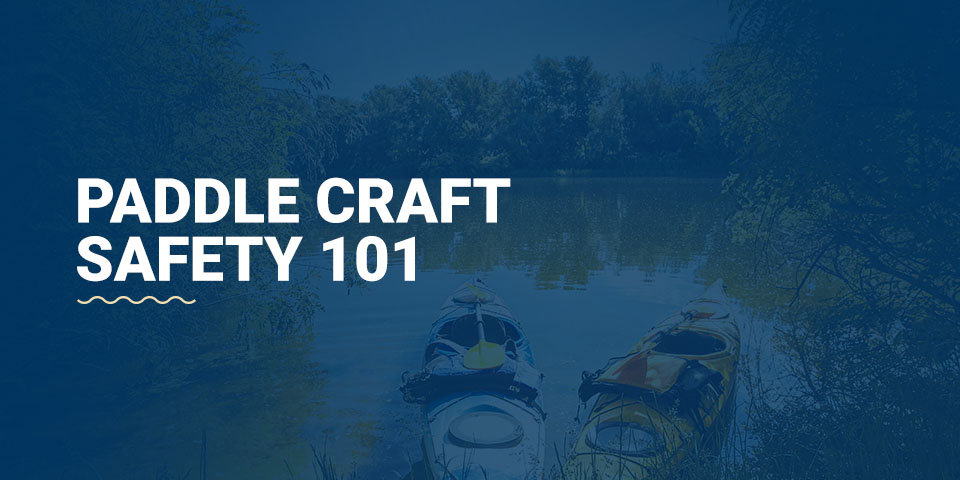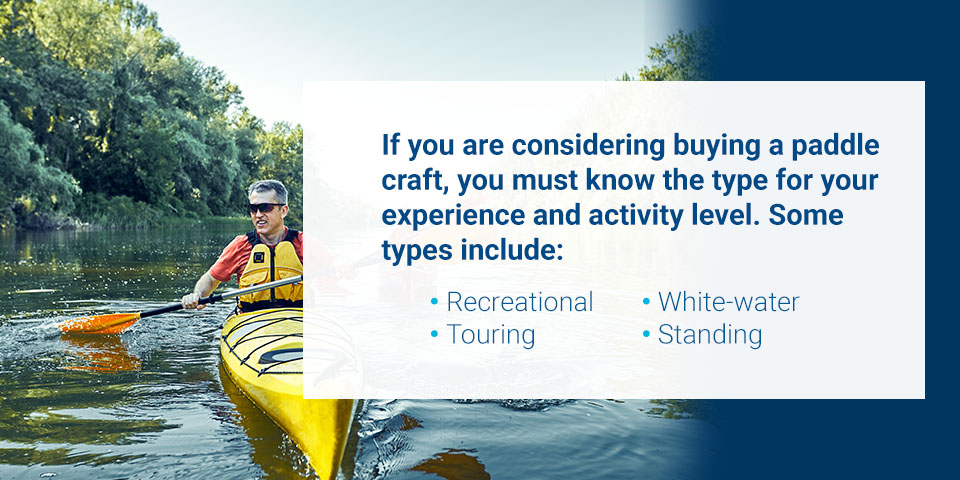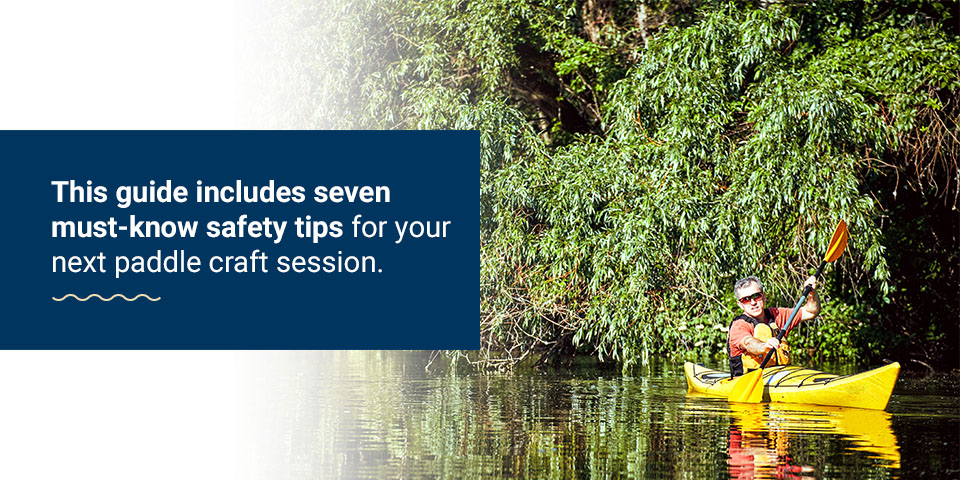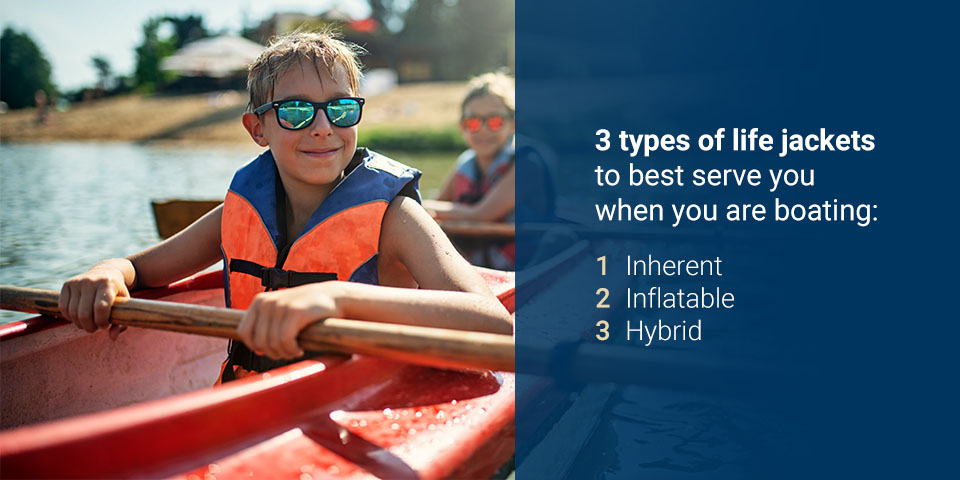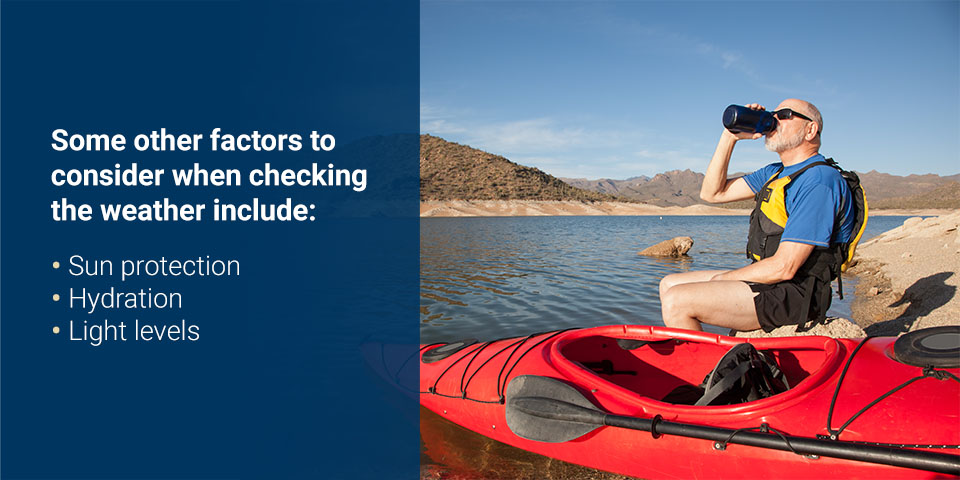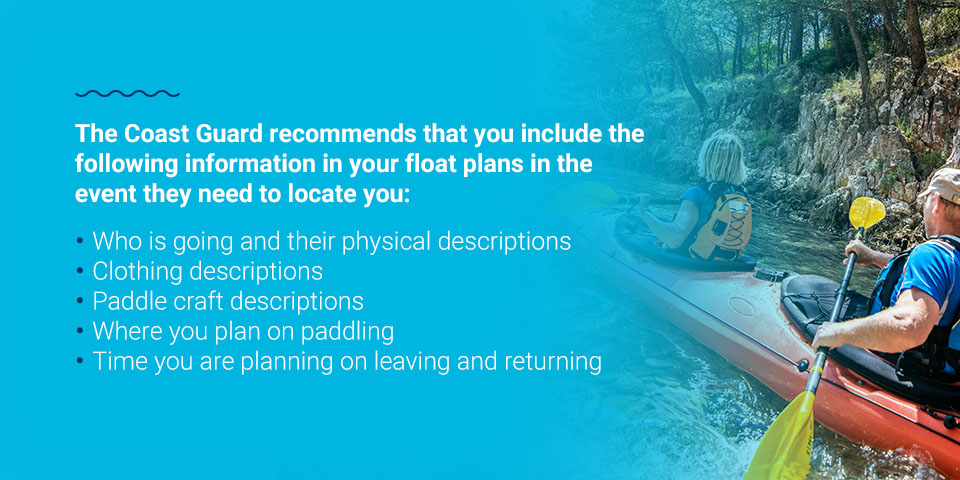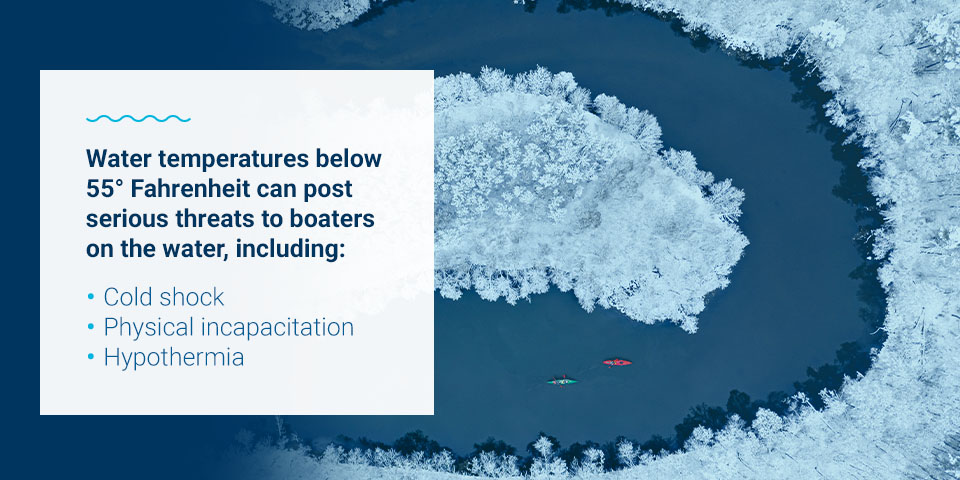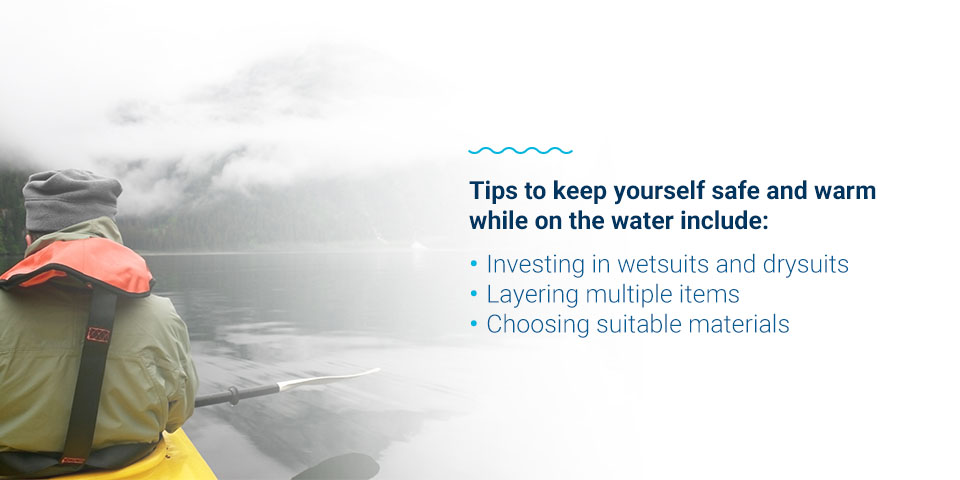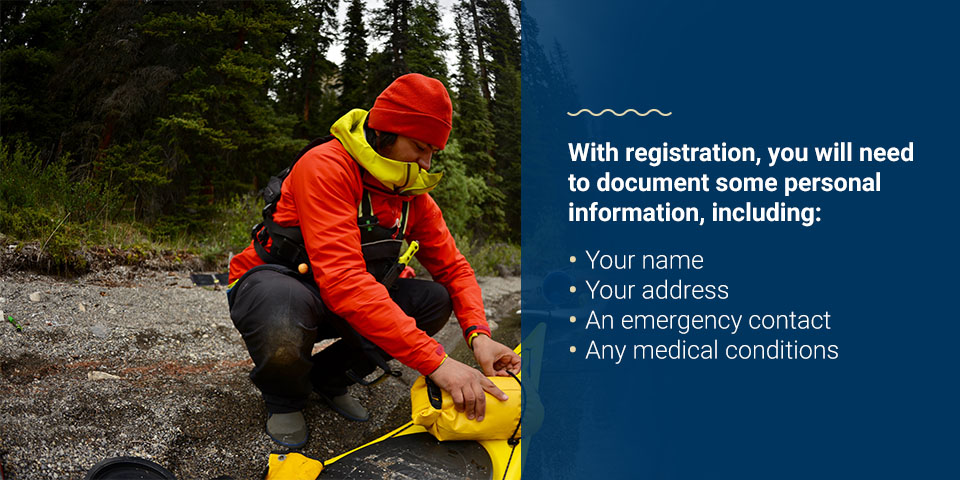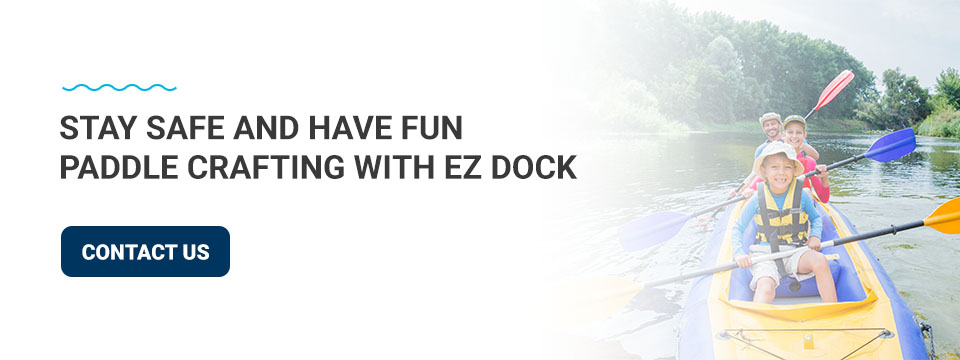Filters
Paddle Craft Safety 101
Paddle crafting is a hobby many people enjoy every year for recreational relaxing on vacations or sports they participate in regularly. Regardless of how you paddleboat, you should always practice paddle craft safety when on the water. Understanding the dangers you face and how to prevent them can help you stay safer and create stronger safety procedures for your boating season.
What Are Paddle Crafts?
Paddle crafts are a type of boat that requires manual power, usually done by one or two people. Paddle crafts include kayaks, canoes and paddleboards. They often come in different designs with varying specifics depending on your skill level and its function. If you are considering buying a paddle craft, you must know the type for your experience and activity level. Some types include:
- Recreational: This type is the most basic paddle craft type, designed for calmer waters, making it perfect for beginners. Even though it is simpler, they still have many applications and uses, so you can take it to your next water adventure to the lake, river or stream.
- Touring: If you are paddleboarding somewhere more advanced, you may want to consider a touring paddle craft. You can use this type’s design to navigate waters with more speed and stability, so you can stay safe while enjoying your time on the water.
- White-water: This type uses a design to keep your paddle craft above the water while traversing through white-water rapids or strong currents. It includes a shorter, rockered hull that will allow you to move better through waterways, where you can have fun while enjoying the intensity of this paddle crafting type.
- Standing: With a design similar to a surfboard, this paddle craft allows you to stand on its surface while using a paddle to steer you across the water.
Paddle crafts are very popular water recreational activities that provide fun for adults and children. However, if you want to invest in a paddle craft or are preparing to dust off yours for the upcoming season, knowing how to keep yourself and your loved ones safe on the water while using the paddle craft is essential.
How to Stay Safe on a Paddle Craft
Staying safe on the water is a must. However, many people are unsure where to start with safety measures. This guide includes seven must-know safety tips for your next paddle craft session.
1. Always Wear a Life Jacket
When participating in any boating, you should wear a life jacket at all times. Life jackets allow you to stay above the water and breathe regardless of your swimming ability and water conditions. Life jackets can keep you afloat if you accidentally fall in the water while paddle boating, sustain injuries or become fatigued.
You should do your research before purchasing or using a life jacket. Each life jacket has different uses and size requirements, so checking the label beforehand can help ensure you are using the right life jacket for you. Using the right life jacket for your size and weight will ensure it offers adequate protection.
In general, there are three types of life jackets, and understanding the differences can help you determine which life jacket can best serve you when you are boating:
- Inherent: Inherent life jackets use built-in floatation, usually made from foam, to keep you afloat when wearing them. They are always buoyant, so they are great for people with all swimming abilities and are available in all sizes. You can also find designs for water sports for additional protection while participating in water activities.
- Inflatable: Inflatable life jackets will require you to blow them up before you can use them. They are more comfortable than inherent life jackets, but they are only available in adult sizes and are better for people with strong swimming abilities.
- Hybrid: Hybrid life jackets combine inherent and inflatable elements to create very reliable life jackets available in more sizes and sports designs. These jackets are great for people of all swimming abilities.
There are also buoyancy aids, which are different than life jackets. While life jackets will keep the wearing facing up to keep their head above the water at all times to protect them from drowning, buoyancy aids allow for greater movement and for the wearer to face the water. Buoyancy aids are better for stronger swimmers who can move easier through water and need less help.
Life jackets need to fit snugly around your chest, but they should still allow you to breathe when floating. It is a good idea to try on life jackets in the water before the boating season or take out your paddle craft. You should be able to float without the life jacket blocking your airways. Otherwise, you may need to find another option for your boating needs.
When preparing to use a paddle craft, you should also know federal and state requirements. All children under the age of 13 must always wear life jackets on any boat by federal law, including paddle crafts. Before boating, you may also need to research local and state requirements since local governments have more specific life jacket laws and regulations.
2. Keep an Eye on the Weather
You can keep yourself safe while paddle boating by checking the weather before you go. Understanding the weather conditions can help you stay safe on the water. If you see adverse weather in the forecast, you can make a plan to return before it begins or reschedule your boating for a different day with clearer weather.
You should also watch the weather while you are out on the water. While weather services are helpful to determine likely weather patterns, they are estimates. Storms can arrive sooner than expected or without forecasting. Watching cloud patterns and noting wind levels can help you judge whether it might be time to turn back or find land because a storm is coming.
Some other factors to consider when checking the weather include:
- Sun protection: When you are on the water, checking the weather can help you bring the tools to keep yourself safe. Sunny and cloudy days can lead to sunburns and skin damage, so you should always have some UV protection. Sunscreen can help protect your face, hands and other areas of exposed skin. You can also use a hat and sunglasses to provide your face and eyes with additional protection.
- Hydration: On warmer days, be sure to pack extra water to stave off dehydration. You should always bring water with you when doing activities on the water, as dehydration can lead to headaches and fatigue.
- Light levels: Many weather services offer times for sunrise and sunset. Checking the weather and these times can help ensure you are always on the water when you have enough light to see potential dangers ahead of you, further keeping you safe. If you are vacationing somewhere, you might be less familiar with light patterns in that area, so using this service can keep you informed and prepared.
When preparing to use your paddle craft for the season, you should consider the various tools you have available. The National Data Buoy Center offers accurate weather information from buoys in many larger waterways, which you can use to check weather information before boating. Using this service or another buoy weather app can provide you with real-time data from the waterway you plan on visiting.
3. File a Float Plan
Float plans are detailed descriptions of your paddle boating plans and include information that can help people locate you in the event of an emergency. You will write it up before you leave to go boating so that if you don’t return as planned, your loved ones can give the most accurate information to the Coast Guard or other local authorities to help find you more efficiently.
The Coast Guard recommends that you include the following information in your float plans in the event they need to locate you:
- Who is going and their physical descriptions
- Clothing descriptions
- Paddle craft descriptions
- Where you plan on paddling
- Time you are planning on leaving and returning
As you are preparing to paddle, you can leave this plan with someone you trust, and they will use your return time to determine if you might need help and contact authorities. Float plans relieve some stress from your loved ones and neighbors from having to remember details themselves.
The Coast Guard also recommends including a picture of your paddle craft with your float plan for increased accuracy to better understand what they are looking for.
4. Go With a Friend
Regardless of your skill level or planned activities, you should always go paddle crafting with at least one buddy. Boating with others present can provide you with company to pass the time and critical assistance in an emergency. If you fall over, your companion can help hold your craft still while you climb back in or pull you up. If you sustain an injury, they can help guide you to safety and call for help.
You can even raft your paddleboards with rope or string to keep your boats together. The more people you bring with you paddle crafting will increase your visibility in the case of an emergency. However, be sure to include accurate information about every person who comes with you in your float plan.
5. Dress for Water Temperature
When preparing for paddleboarding, many people check the air temperature and dress to be comfortable. However, water temperature is often drastically different than air temperature and can pose serious health and safety threats to boarders if they accidentally tip while out.
While cold air can lead to health problems, cold water can drain the body of heat four times faster than air, so paddle crafters must dress accordingly. The National Weather Service points out that water temperatures below 55° Fahrenheit can post serious threats to boaters on the water, including:
- Cold shock: Sudden exposure to cold water, like unexpectantly tipping over, can lead to cold shocks. This phenomenon can cause rapid breathing or hyperventilating, increasing someone’s risk of drowning if they can’t keep their head above the water. Cold shocks can also cause increases in heart rate and blood pressure, increasing the risk of heart attacks or strokes. They can occur in water as warm as 77° Fahrenheit, but dressing accordingly can reduce risks and keep your body warm.
- Physical incapacitation: Cold water can decrease muscle control in arms, legs and extremities, making it more challenging to keep moving in cold water.
- Hypothermia: Hypothermia occurs when your internal body temperature reaches 95° Fahrenheit. Because cold water drains so much body heat, the longer people stay in cold water or without medical attention, the further their internal body temperature will continue to drop.
Because the dangers of cold water are more severe, you can practice better paddle craft safety by dressing in for water temperature. Some tips to keep yourself safe and warm while on the water include:
- Investing in wetsuits and drysuits: Wetsuits and drysuits can help insulate you if you accidentally fall in the water. Wetsuits use a layer of water against your skin to keep you warm — drysuits are waterproof and watertight, keeping cold water from contacting your skin and chilling you. Drysuits are better for colder weather, while wetsuits are helpful for days when the air is warm, but the water is cold.
- Layering multiple items: While suits can help keep your skin protected, layering can add additional warmth and further protect you from colder water. You can add other layers over your wetsuit and over and under your drysuit. Layers allow you to keep yourself warm if you fall in the water while giving you the freedom to take off layers if you get warm. You should target the layers around your chest and torso since that is the area you need to protect from cold water.
- Choosing suitable materials: As you get ready to paddle, consider your clothing materials. While cotton is comfortable, it will only absorb water and stay wet if you fall in. Instead, consider nylon or polyester clothes that will dry quickly, so you can warm up faster. Even wool can be helpful since it will continue to insulate you while wet, even if it does dry slowly. Choosing smart layers can help you recover and warm up quickly after falling in cold water.
Gloves are another common recommendation for paddle crafters. Gloves can help keep your hands warm in cold water while protecting your skin from blisters and sores from paddling.
6. Choose the Right Location
Choosing a location is a critical part of paddle boating. You will want to pick an area that you are familiar with and that is safe. If you are traveling somewhere new, consider familiarizing yourself with the area beforehand to have an idea of the potential dangers, trouble areas and skills required. To ensure your safety, you will want to paddleboat somewhere within your skill range and with minimal surprises.
7. Have a Way to Contact Help
As you plan your paddle craft activities, consider how you can contact help if needed. Many people have cellular devices that help them stay connected with loved ones every day, but you may find that you don’t have cell service out on the water or in more remote locations. In these instances, it is essential to have a backup plan if you need to call for help in an emergency.
Many people invest in emergency position indicating radio beacons (EPIRBs) for their boats to allow them to use satellite technology to signal for help from emergency search and rescue services, like the Coast Guard. You can only register these tools to specific vessels, and they only work at sea. However, you can invest in something similar with personal locator beacons (PLBs).
While EPIRBs register to individual vessels, you will register a PLB with a specific person, allowing you to carry it with you regardless of what boat or paddle craft you take. This makes it great for people who have several paddle crafts that they use, so they can still practice paddle craft safety while enjoying the full extent of their options.
PLBs give you more extensive coverage, covering the land and waterways, so you can bring it with you more places than an EPIRB. When you activate them, they use satellite systems to send your signal to local authorities, alerting them someone is in distress, and a separate satellite system pinpoints your location so they can find you easily. They often come with waterproof sleeves to protect them while on the water and have batteries that last years.
When you purchase a PLB, you must register it with the National Oceanic and Atmospheric Administration Search and Rescue Satellite Aided Tracking (NOAA SARSAT). With registration, you will need to document some personal information, including:
- Your name
- Your address
- An emergency contact
- Any medical conditions
When you activate your PLB, emergency responders will receive this information, helping them locate and help you. You may need to update this information every few years or confirm that all information is still correct, so local authorities can access more accurate information.
If you want increased communication abilities, you can invest in a satellite messenger instead. These devices are very similar to PLBs in that they also send out SOS signals using satellites to local authorities, but they can have increased abilities. You can also send personal, non-emergency messages to loved ones and communicate with search and rescue services. With a satellite messenger, you can cancel your signal in the event of false activation.
Some come with GPS navigation to help you better understand the surrounding area and provide aid if you get lost. Other than the added services, the main difference between these tools and PLBs is that you will have a subscription or payment plan to use it, while PBLs are free.
While your cellphone might be unreliable in more remote areas, you can still bring it as a last resort mode of communication. Cellular accessibility is becoming more available in remote locations, so you may find yourself somewhere with a cell signal. The Coast Guard offers a mobile app with several services for paddle crafters, like emergency assistance that alerts the nearest Coast Guard post.
The app also allows you to upload a float plan, receive and check weather reports from weather buoys and access safety checklists, helping you stay prepared before you even get on the water.
Stay Safe and Have Fun Paddle Crafting With EZ Dock
Taking the proper safety precautions when paddle crafting can help ensure you and your loved ones continue to have fun and create long-lasting memories on the water. Thousands of Americans enjoy various paddle sports each year, and you can join them while staying safe.
At EZ Dock, we understand water safety needs to be a top priority. We designed our floating docks to maintain safety and functionality standards with durable materials and slip resistance. By using recycled rubber over wood, we eliminate the risk of pesky splinters and annual maintenance. Our floating docks are a long-term investment that will provide you and your loved ones with fun for years to come.
Request a quote today and discover how EZ Dock can support your love for paddle crafting.

